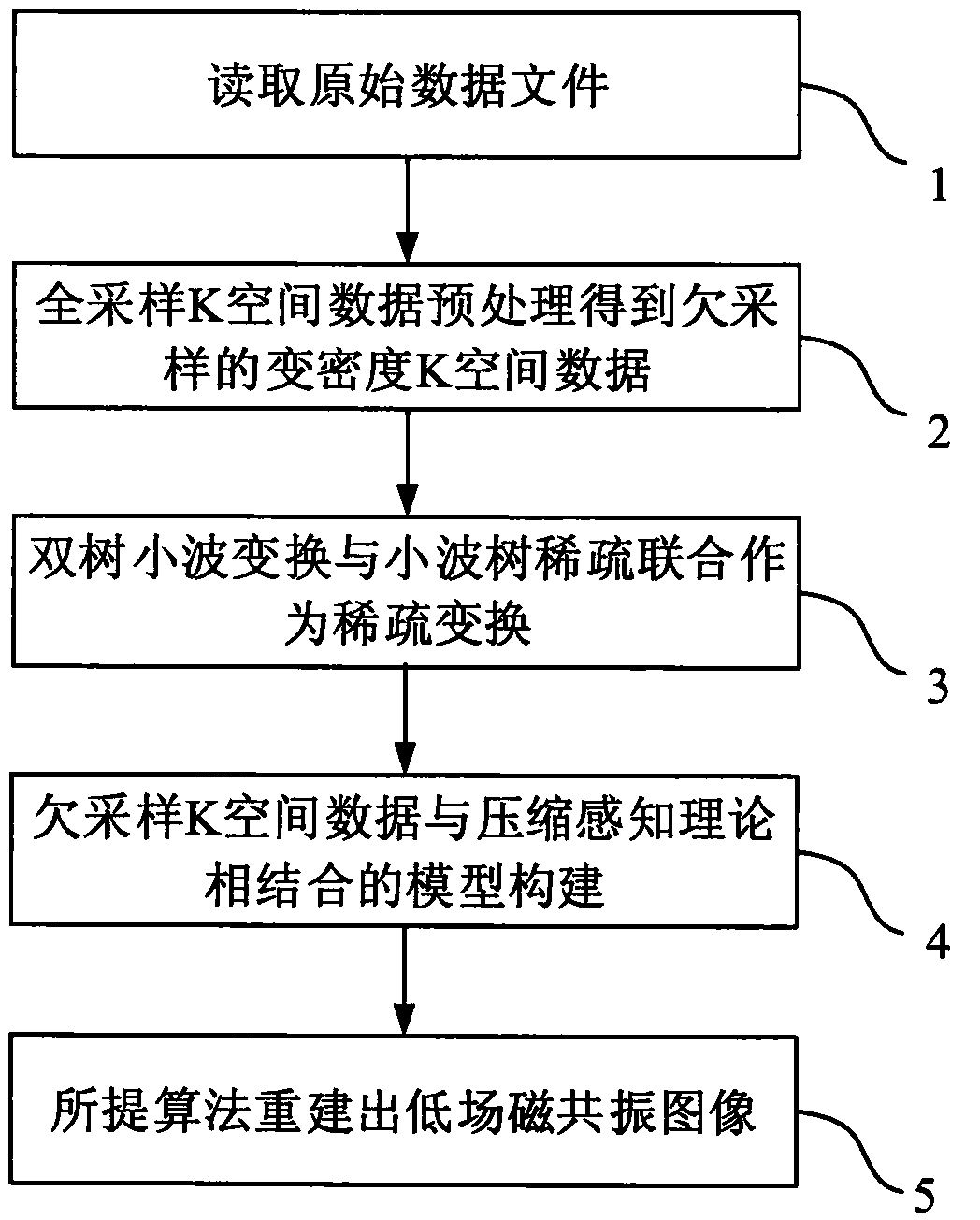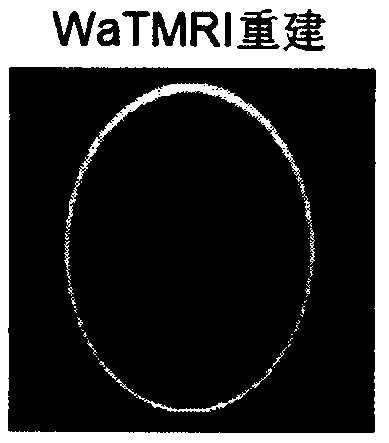Compressed sensing low-field magnetic resonance imaging algorithm
A magnetic resonance imaging and compressed sensing technology, applied in the direction of measuring magnetic variables, measuring devices, instruments, etc., can solve problems such as inability to sparsely represent two-dimensional signals-Vitch outliers, difficulty in capturing image contours, and transfer sensitivity. Achieve the effect of overcoming aliasing artifacts, improving imaging speed, and good robustness
- Summary
- Abstract
- Description
- Claims
- Application Information
AI Technical Summary
Problems solved by technology
Method used
Image
Examples
Embodiment Construction
[0034] Such as figure 1 As shown, a compressed sensing (low field) magnetic resonance imaging algorithm combining dual-tree wavelet transform and wavelet tree sparseness includes the following steps:
[0035] 1. Read the raw data files collected by the low-field nuclear magnetic resonance equipment;
[0036]2. The original data is used as full-sampled K-space data, and the simulated under-sampling processing operation is performed to obtain randomly variable density under-sampled K-space data;
[0037] 3. The sparser the magnetic resonance image itself or in a certain transformation domain, the better its reconstruction quality. The combination of dual-tree wavelet transform and wavelet tree sparseness is used as the sparse transformation in compressed sensing theory;
[0038] 4. Combine the undersampled K-space data obtained in step 2 with the compressive sensing theory in step 3 to build a model, and model the MRI image reconstruction problem as a linear model that includes...
PUM
 Login to View More
Login to View More Abstract
Description
Claims
Application Information
 Login to View More
Login to View More - R&D
- Intellectual Property
- Life Sciences
- Materials
- Tech Scout
- Unparalleled Data Quality
- Higher Quality Content
- 60% Fewer Hallucinations
Browse by: Latest US Patents, China's latest patents, Technical Efficacy Thesaurus, Application Domain, Technology Topic, Popular Technical Reports.
© 2025 PatSnap. All rights reserved.Legal|Privacy policy|Modern Slavery Act Transparency Statement|Sitemap|About US| Contact US: help@patsnap.com



